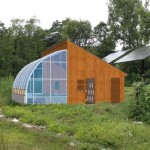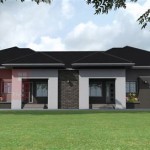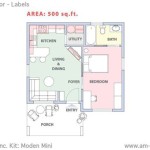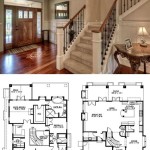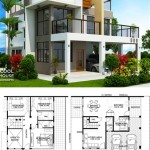Your article should not include an estimate of a specific dollar amount, but should clearly explain the various factors that go into creating an estimate for a 20x30 house plan. ```html
20x30 House Plan Cost Estimate: A Comprehensive Guide
Estimating the cost of building a 20x30 house plan is a complex process that involves careful consideration of numerous factors. A precise cost estimate is critical for budgeting, securing financing, and managing project expectations. This article provides a comprehensive overview of the elements that contribute to the overall cost of constructing a 20x30 house, enabling individuals to approach their building project with informed awareness.
The financial outlay for a construction project of this scale extends beyond the cost of materials and labor. Contingency funds should be considered to address unforeseen issues or modifications that may arise during the building process. A thorough estimation process integrates these factors to provide a realistic projection of the total expense.
While it is impossible to provide a single figure for the cost of building a 20x30 house plan without knowing the specific circumstances of the project, it is possible to break down the contributing factors and explain how each influences the final cost.
Understanding the Scope of the Project
The initial step in estimating the cost of a 20x30 house plan involves clearly defining the scope of the project. This includes specifying the type of construction (e.g., single-story, two-story), the level of finishes desired, and the complexity of the design. These factors directly influence the labor and material requirements, and consequently, the overall cost.
A simpler, single-story design with standard finishes will generally be less expensive than a two-story house with custom features and high-end materials. The architectural style also plays a role; a contemporary design may necessitate different construction techniques and materials compared to a more traditional style. Any special features, such as a basement, attached garage, or elaborate landscaping, must be factored into the scope as well.
Detailed architectural plans are essential for accurate cost estimation. These plans should include comprehensive specifications for all aspects of the house, from the foundation to the roof. The clearer and more detailed the plans, the easier it is for contractors and suppliers to provide accurate quotes.
Key Cost Components: Materials, Labor, and Land
The total cost of building a 20x30 house can be broadly divided into three primary components: materials, labor, and land. The proportionate expenditure on each element can fluctuate based on location, design complexity, and market conditions.
Materials
Material costs encompass all the physical components needed to construct the house. These can be categorized into several sub-sections:
- Foundation Materials: Concrete, reinforcing steel (rebar), foundation waterproofing.
- Framing Materials: Lumber, engineered wood products, fasteners.
- Exterior Materials: Siding (e.g., vinyl, wood, brick, stone), roofing materials (e.g., asphalt shingles, tile, metal), windows, doors.
- Interior Materials: Drywall, insulation, flooring (e.g., hardwood, tile, carpet), paint, trim, cabinets, countertops, plumbing fixtures, electrical fixtures.
- HVAC Materials: Furnace, air conditioner, ductwork, ventilation equipment.
The selection of specific materials significantly impacts the overall cost. For example, choosing hardwood flooring over carpet, or granite countertops over laminate, will increase the material expenditure. Similarly, energy-efficient windows and insulation, while initially more costly, can lead to long-term savings on energy bills.
Labor
Labor costs include the wages paid to all the workers involved in the construction process. This typically includes:
- General Contractor: Oversees the entire project, manages subcontractors, and ensures that work is completed according to the plans and specifications.
- Subcontractors: Specialists in specific trades, such as:
- Framers: Construct the structural framework of the house.
- Electricians: Install electrical wiring, outlets, and fixtures.
- Plumbers: Install plumbing pipes, fixtures, and appliances.
- HVAC Technicians: Install heating, ventilation, and air conditioning systems.
- Drywall Installers: Install and finish drywall.
- Painters: Paint interior and exterior surfaces.
- Flooring Installers: Install flooring materials.
- Roofers: Install roofing materials.
- Landscapers: Install landscaping and hardscaping.
Labor costs are influenced by several factors, including the availability of skilled tradespeople in the area, the complexity of the work, and the prevailing wage rates. Areas with high demand for construction workers often have higher labor costs. The general contractor typically charges a percentage of the total project cost as their fee, which covers their overhead and profit margin.
Land
The cost of the land is a significant factor in the overall project budget. Land prices vary widely depending on location, size, zoning regulations, and accessibility to utilities and amenities. Land in urban areas or desirable suburban locations is generally more expensive than land in rural areas.
Before purchasing land, it is essential to conduct thorough due diligence to ensure that the site is suitable for building. This includes checking zoning regulations, obtaining soil tests, and verifying the availability of utilities. Site preparation costs, such as clearing trees, grading, and excavating, should also be factored into the land cost.
Location, Codes, and Permits: Influencing the Overall Expense
The geographical location of the building site has a profound impact on the construction cost. Differing regional building codes, material prices, and labor rates contribute to fluctuations in the overall budget.
Local building codes and regulations vary significantly from one jurisdiction to another. These codes dictate the minimum standards for construction, including structural integrity, fire safety, and energy efficiency. Compliance with these codes can affect the choice of materials and construction techniques, which in turn influences the cost. Areas with stringent building codes may require more expensive materials and labor to meet the required standards.
Permit fees are another location-dependent cost. Building permits are required for most construction projects and ensure that the work complies with local building codes. The cost of these permits varies depending on the size and complexity of the project. In addition to building permits, other permits may be required for specific aspects of the project, such as electrical, plumbing, and HVAC work. The costs associated with engaging professionals to provide architectural, engineering, and surveying services should also be considered as part of the permitting process.
Furthermore, the cost of transporting materials to the building site can vary based on location. Remote areas may incur higher transportation costs due to increased distance and logistical challenges.
The cost of living also impacts the cost of construction. Areas with a higher cost of living tend to have higher labor rates and material prices.
Geographic factors also play a role. Areas prone to natural disasters, such as earthquakes or hurricanes, may require more robust construction techniques and materials, increasing the cost.
```
20x30 House Plan And Construction Cost Housedesigns99

Duplex House Construction Cost In Bangalore 20 30 40 60 50 80 Or Of For Building

𝟐𝟎 𝐱 𝟑𝟎 𝐇𝐨𝐮𝐬𝐞 𝐏𝐥𝐚𝐧 With Vastu Tips

20x30 House Plan And Construction Cost Housedesigns99

West Facing 20 X 30 House Plan Housedesigns99

𝟐𝟎 𝐱 𝟑𝟎 𝐇𝐨𝐮𝐬𝐞 𝐏𝐥𝐚𝐧 With Vastu Tips

𝟐𝟎 𝐱 𝟑𝟎 𝐇𝐨𝐮𝐬𝐞 𝐏𝐥𝐚𝐧 With Vastu Tips
House Construction Cost Calculator 2025 Civiconcepts

20 X 30 House Plan 20x30 Ka Ghar Naksha Design 600 Sqft
House Construction Cost Calculator Excel Sheet

